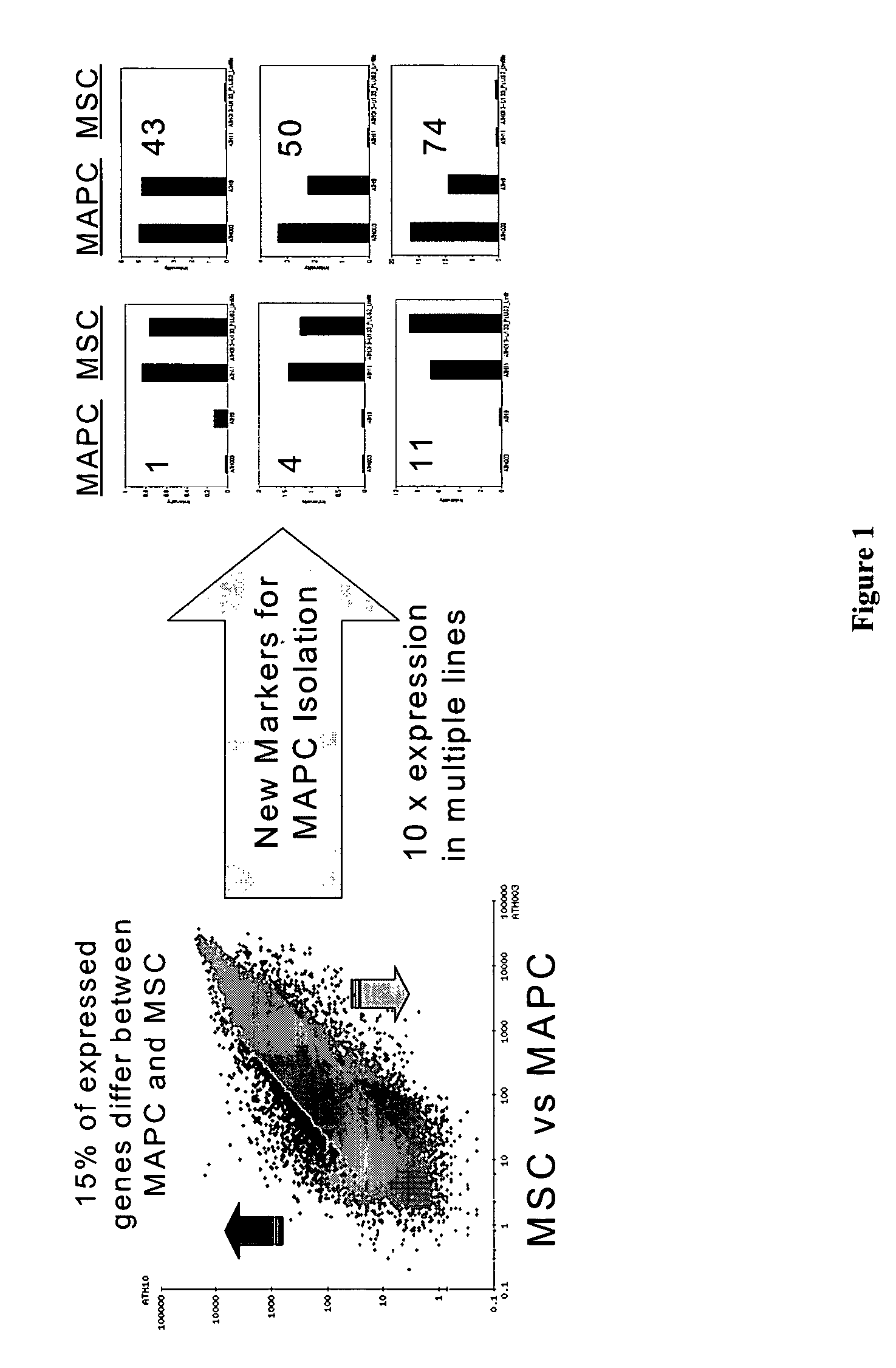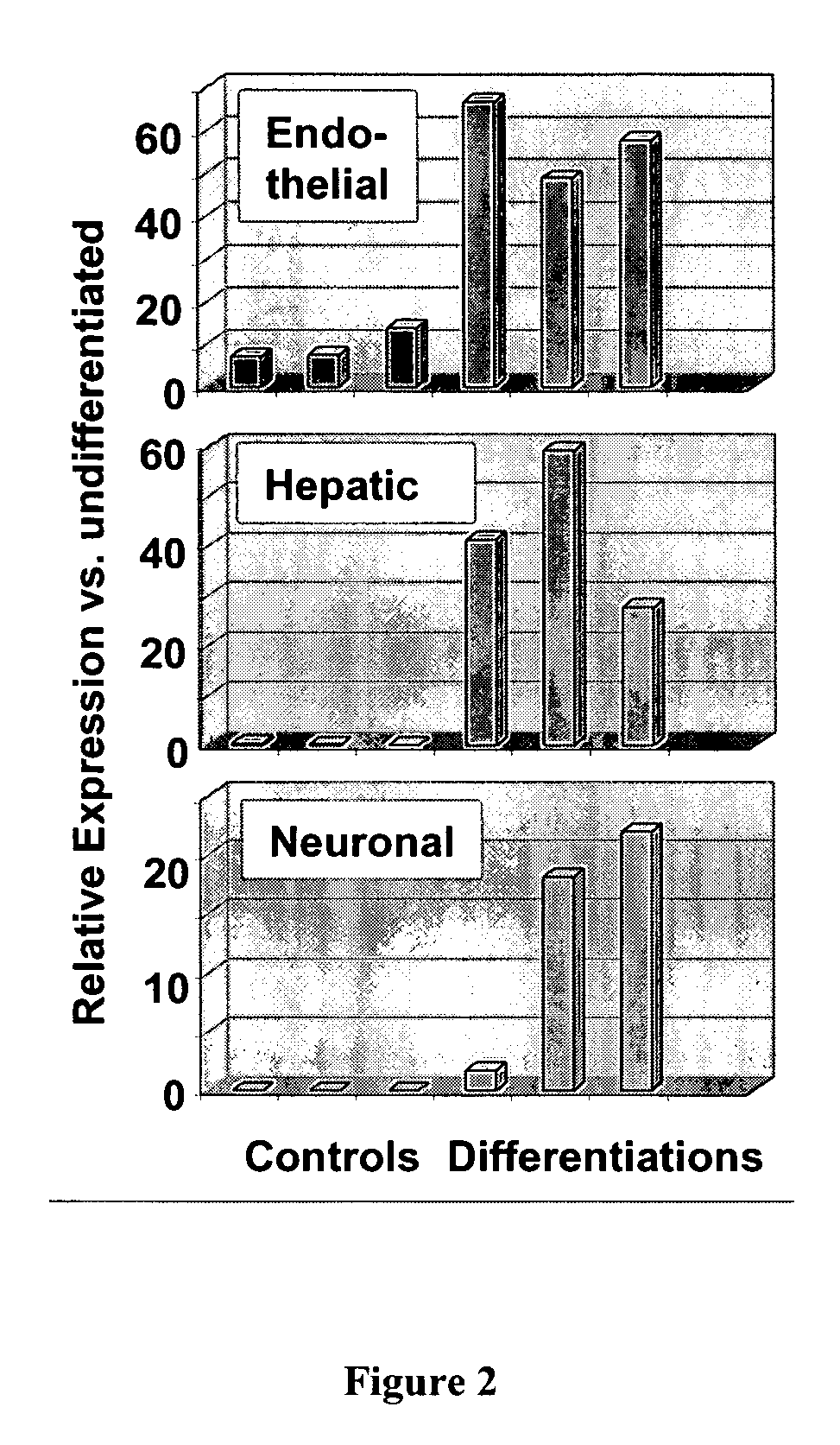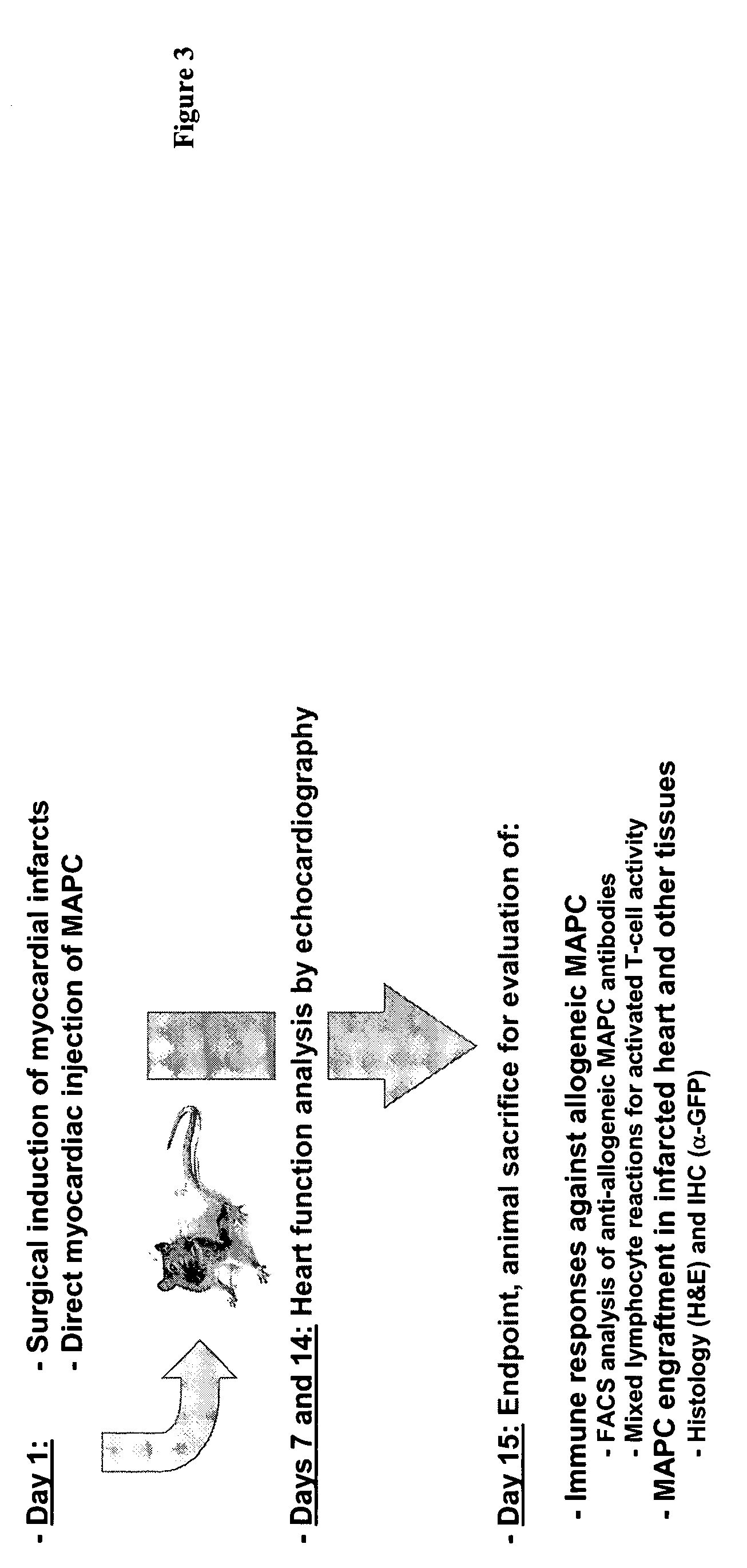Use of multipotent adult stem cells in treatment of myocardial infarction and congestive heart failure
a stem cell and myocardial infarction technology, applied in the field of heart disease, can solve the problems of unable to provide a source of cells for repair of other damaged tissues, cells of hematopoietic lineage, and cells generating teratomas, etc., and achieve the effect of restoring or enhancing cardiac muscle function
- Summary
- Abstract
- Description
- Claims
- Application Information
AI Technical Summary
Benefits of technology
Problems solved by technology
Method used
Image
Examples
example 1
Isolation of Human MAPCs from Bone Marrow Mononuclear Cells
[0208]Bone marrow mononuclear cells were obtained from bone marrow aspirates from the posterior iliac crest of >80 healthy human volunteers. Ten to 100 cubic centimeters of bone marrow was obtained from each subject, as shown in Table 2, which indicates the approximate number of mononuclear cells isolated from each subject. Mononuclear cells (MNC) were obtained from bone marrow by centrifugation over a Ficoll-Paque density gradient (Sigma Chemical Co, St Louis, Mo.). Bone marrow MNC were incubated with CD45 and Glycophorin A microbeads (Miltenyi Biotec, Sunnyvale, Calif.) for 15 minutes and CD45+ / Gly-A+ cells removed by placing the sample in front of a SuperMACS magnet. The eluted cells are 99.5% CD45− / GlyA−.
[0209]As shown in Table 2, depletion of CD45+ GlyA+ cells resulted in recovery of CD45− GlyA− cells which constituted approximately 0.05 to 0.10% of the total bone marrow mononuclear cells.
[0210]
TABLE 2Number of MAPCsVol...
example 2
Treatment of Acute MI in Rat LAD Model
Cell Isolation and Expansion of Rat MAPC
[0214]BM and MNC from Sprague Dawley or Wistar rats were obtained and plated under conditions similar for mMAPC. After 21-28 days, cells were depleted of CD45+ cells, and the resulting CD45− cells were subcultured at 10 cells / well.
[0215]Similar to mMAPC, rMAPC have been culture expanded for >100 PDs. Expansion conditions of rat MAPC culture required the addition of EGF, PDGF-BB and LIF and culture on FN, but not collagen type I, laminin or Matrigel™.
[0216]Rat MAPC that had undergone 42 PDs, 72 PDs, 80 PDs, and 100 PDs, were harvested and telomere lengths evaluated. Telomeres did not shorten in culture, as was determined by Southern blot analysis after 42 PDs, 72 PDs, 80 PDs, and 100 PDs. Monthly cytogenetic analysis of rat MAPC revealed normal karyotype.
Transduction
[0217]To demonstrate that differentiated cells were single cell-derived and MAPC are indeed “clonal” multipotent cells, cultures were made in w...
PUM
| Property | Measurement | Unit |
|---|---|---|
| cell-doubling time | aaaaa | aaaaa |
| cell mass | aaaaa | aaaaa |
| MI | aaaaa | aaaaa |
Abstract
Description
Claims
Application Information
 Login to View More
Login to View More - R&D
- Intellectual Property
- Life Sciences
- Materials
- Tech Scout
- Unparalleled Data Quality
- Higher Quality Content
- 60% Fewer Hallucinations
Browse by: Latest US Patents, China's latest patents, Technical Efficacy Thesaurus, Application Domain, Technology Topic, Popular Technical Reports.
© 2025 PatSnap. All rights reserved.Legal|Privacy policy|Modern Slavery Act Transparency Statement|Sitemap|About US| Contact US: help@patsnap.com



